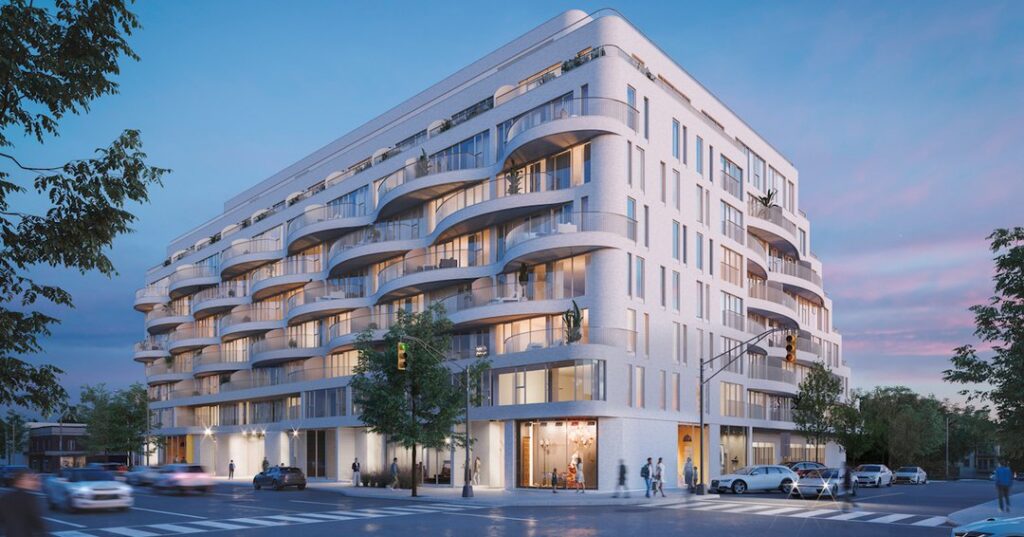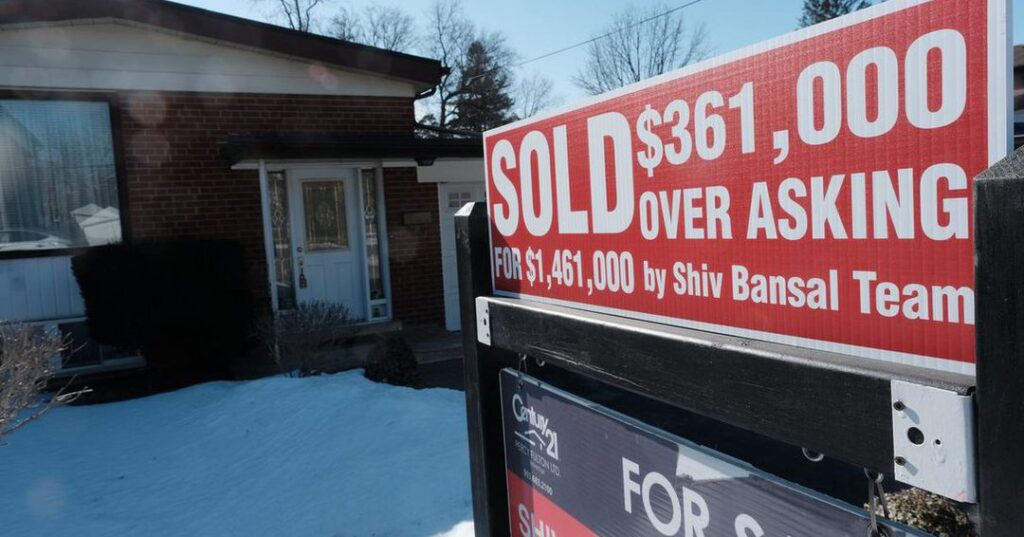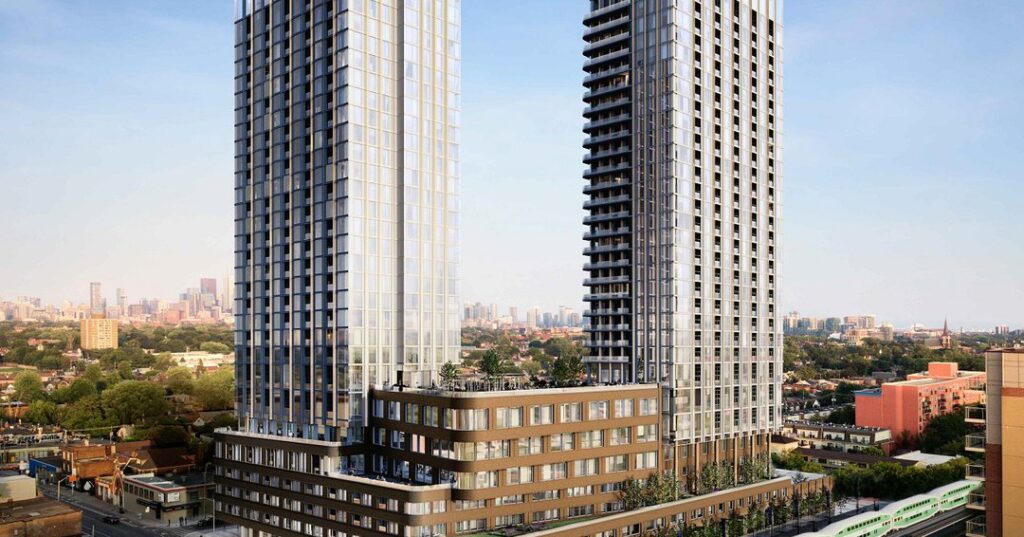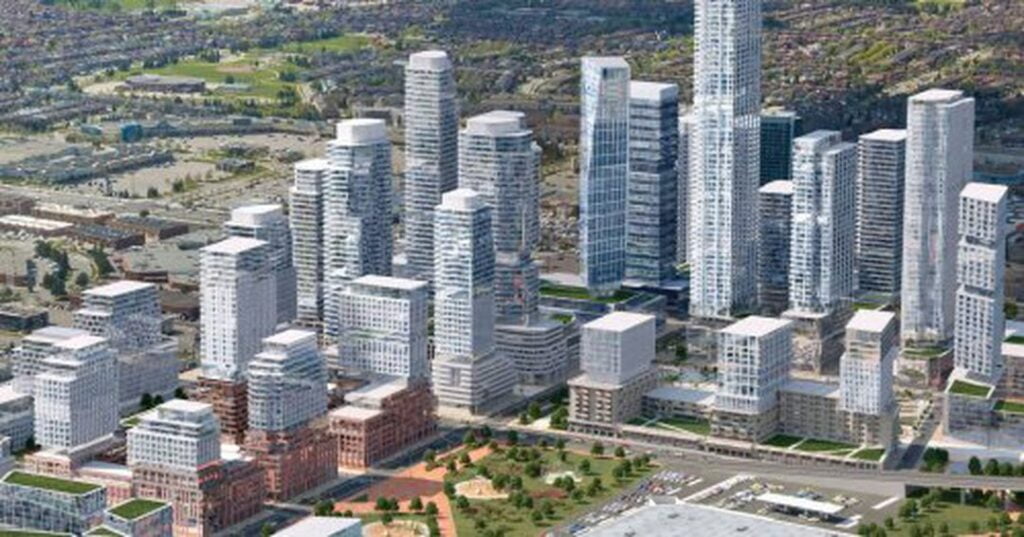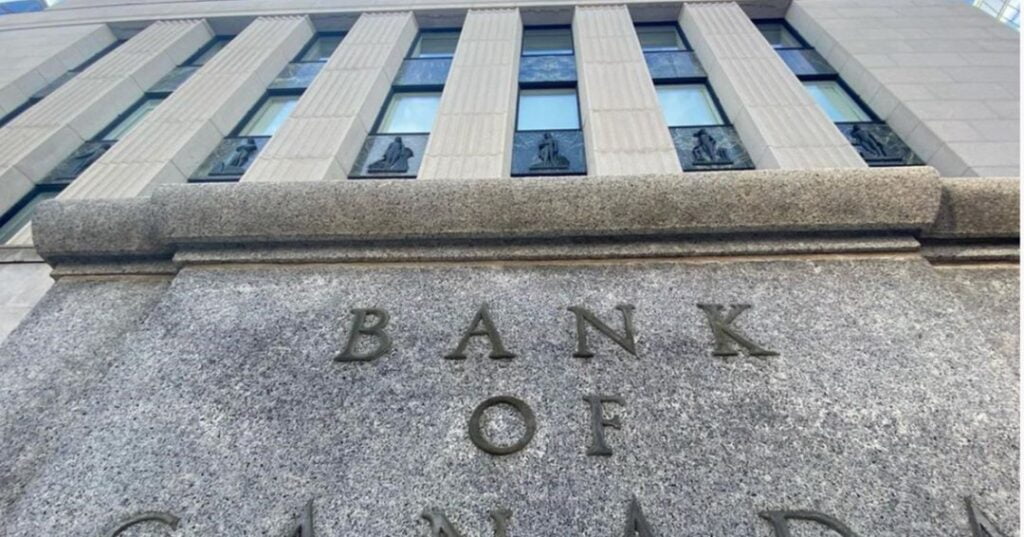February 2022 Construction Start and Completions in Toronto
February 2022 Construction Start and Completions in Toronto The construction in Toronto never seems to end, with new buildings continuously being presented to the City for approval, new cranes sprouting up on the skyline, and old ones being removed. In this article, we will provide an overview of projects where work has begun and those where we have changed the status to finished as the first residents have moved in with this monthly feature. Construction Starts The following are the initiatives that started – or were about to start – in February: Reina Condos BDP Quadrangle has developed a 9-storey, 200-unit mixed-use condominium project for Urban Capital Property Group on the southeastern corner of The Queensway and Penhurst Avenue in South Etobicoke. Reina Condos held a ceremonial groundbreaking event on February 19, according to their Instagram account, indicating that the building is likely to start soon. Alba The 32-story, 418-unit tower, designed by Core Architects for Edenshaw Developments Limited, will also include 4 townhomes and is scheduled to be completed in downtown Mississauga by 2025. Work has recently begun to prepare the site for shoring, with a digger, many dump trucks, and a large pile of excavation seen on site. Jac Condos Turner Fleischer Architects designed the 34-story, 489-unit mixed-use complex for Graywood Developments and Phantom Developments on the west side of Jarvis Street, just south of Carlton Street. The site’s below-grade levels have lately been sunk two storeys deep, and it comprises a shoring rig, a digger, a bobcat, and lagging piles in its pit. Realm Condos Realm Condos, constructed by Adi Development Group, is situated in Burlington at the junction of Thomas Alton Boulevard and Appleby Line. The two buildings will each be 16 stories tall, joined by a 5-story platform, and will add nearly 400 additional homes to the neighbourhood. The project was officially kicked off on February 9th, and soil has already been dug up and loaded into dump trucks. Royal Bayview Royal Bayview is located in Markham, just off Bayview Avenue on Royal Orchard Boulevard, and will have 91 and 77 home-sized condominium units in two 12- and 14-story residential structures with views of the exclusive Ladies’ Golf Club of Toronto. The Kirkor Architects Planners-designed structure, which is being developed by Tridel, is anticipated to be finished in 2024, and two shoring rigs have lately appeared on site. Completed Projects The following are the projects that we consider finished, based on the fact that they have awarded occupancy to their first residents: Nova Urban Towns Nova Urban Towns, located at 57 Finch Avenue West, appears to be finished and residents have begun to move in. The Kaleido Corporation created the 4-story town houses, which were designed by SRN Architects Inc. and include a total of 42 apartments. The Stack at Bayview The Stack, new retail and residential development in Toronto’s Leaside neighbourhood developed by The Brown Group of Companies, was recently finished. Kohn Partnership Architects Inc. created the low-rise building at 1680 Bayview Avenue, which is seven stories tall and houses 146 residential apartments. Is there still a project that we’ve overlooked? Please feel free to contact us and let us know whether we missed it. Meanwhile, keep an eye on our Forum for new construction projects that are starting or wrapping up this month. More detailed information about each of these advances will be available shortly, but in the meanwhile, you may read more about the projects by visiting our Database files, which are linked below. You can participate in discussions on the Project Forum threads linked above, or leave a remark in the area provided on this page. The latest data research service provides detailed information on building projects in the Greater Toronto Area, from proposal to completion. In addition, our daily subscription newsletter, New Development Insider, is delivered to your mailbox to assist you in tracking initiatives through the planning process. Related posts. The average detached house in Toronto has already surpassed the $2 million mark by admin123 February 2022 Construction Start and Completions in Toronto by admin123 The Martha James Condominiums are set to open in Burlington by admin123 The battle of the list price homebuyers are irritated by too-low asking prices by admin123 Toronto surpassing its the house-price insanity capital of Canada by admin123 It might finally be time for Canadian homeowners to sell by admin123
February 2022 Construction Start and Completions in Toronto Read More »

